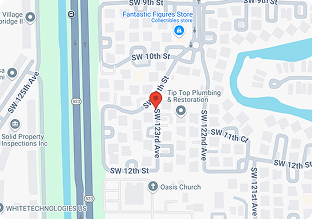Utility color codings are a critical aspect of construction and excavation work. The colored flags ensure the safety of workers and the public by preventing accidental damage to underground utilities.
We recognize the importance of adhering to these color codes and aim to educate our community on interpreting these essential safety signals.
If you find colored flags you don’t know about, please don’t remove them. It could mean that a utility company will be conducting maintenance or repair work or that government authorities will excavate the area.
Below, we cover all the color codings and their meanings. We also share how we handle these flags whenever we find them in your yard.
What do the colored flags in your yard mean?
When you come across colored flags or paint markings in your yard or on a construction site, each color signifies a specific type of underground utility.
Check out their meanings!

Red indicates electric power lines, cables, conduit, and lighting cables
Red flags are a warning of electrical components beneath the ground. These can include power lines, cables, conduits, and lighting cables. Accidentally hitting a red-marked utility can result in severe injury or power outages.
Yellow indicates gas, oil, steam, petroleum, or gaseous materials
Yellow flags warn about gas, oil, steam, petroleum, or other gaseous materials. Damaging these lines can lead to dangerous leaks or explosions, highlighting the importance of cautious excavation around these markings.
Orange indicates communication, alarm, or signal lines, cables, or conduits
Orange flags warn that there are communication-related utilities like telephone lines, internet cables, alarm circuits, and signal systems. While less immediately dangerous than gas or electric lines, damaging these can disrupt communication services.
Blue indicates potable water lines
Blue flags signal the presence of potable (drinkable) water lines. Damaging these lines can lead to water contamination and loss of water supply.
Purple indicates reclaimed water, irrigation, and slurry lines
Purple flags mean that there are reclaimed water, irrigation systems, and slurry lines. These are non-potable water sources used mainly for agricultural and landscaping purposes.
Green indicates sewers and drain lines
Green flags mean there are sewer lines and drainage systems. Damage to these utilities can result in environmental contamination and health hazards due to sewage leaks.
Pink indicates temporary survey markings
Pink flags are often used as temporary survey markings that guide construction and excavation projects. These markings are crucial for planning and executing work safely around existing utilities.
White indicates proposed excavating limits
White flags are used to outline areas of proposed excavation or demolition.
What happens when plumbers find colored flags?
- Initial Assessment: We carefully assess the marked area to understand the potential implications for our work.
- Use of Specialized Tools: To accurately locate and identify utility lines, we employ a variety of tools, including:
- Pipe and cable locators: These devices help us estimate the most accurate position and depth of metal pipes and cables.
- Plastic pipe locators: For non-metallic pipes like PVC water lines, we use these locators that use acoustics.
- Magnetometers: These tools use the earth’s magnetic fields to locate iron objects.
- Metal Detectors: We employ various metal detectors for metallic objects.
- Coordination with Utility Companies: When necessary, we coordinate with utility companies to confirm the type and location of their lines.
- Safe Digging Practices: Armed with accurate information, we employ safe digging practices to avoid damaging utility lines, using hand tools for delicate areas and machinery where it’s safe.
At Tip Top Plumbing, we’re committed to delivering reliable plumbing services while maintaining the highest safety standards.





